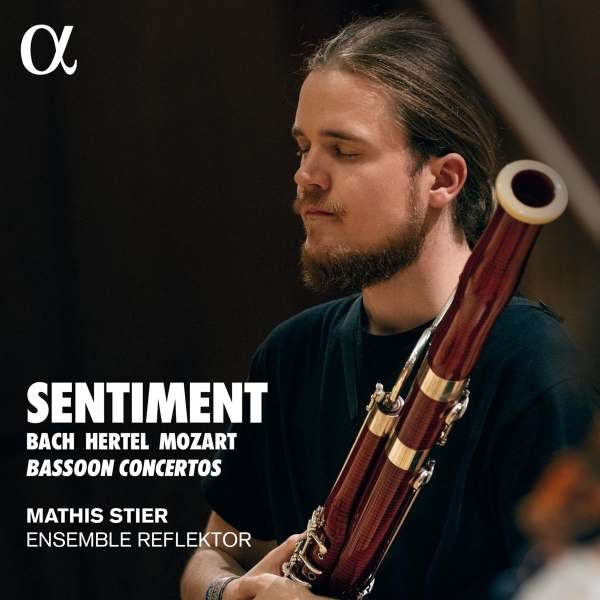Košík
Váš košík je momentálne prázdny.
Mathis Stier (bassoon) - Sentiment
15,00 €
Formát:
CD
Dostupnosť:
7-14 dní
Katalógové číslo:
ALPHA 825
EAN kód:
3760014198250
Autori:
Johann Sebastian Bach, Johann Wilhelm Hertel, Wolfgang Amadeus Mozart
Interpreti:
Ensemble Reflektor, Mathis Stier
Vydavateľ:
ALPHA
Zoznam skladieb
Bach, J S: Oboe d'amore Concerto in A major, BWV1055Work length 13:16
Mathis Stier
Ensemble Reflektor
I. [Allegro] by Mathis Stier
II. Larghetto by Mathis Stier
III. Allegro ma non tanto by Mathis Stier
Hertel, J W: Bassoon Concerto in A minor
Work length 18:24
Mathis Stier
Ensemble Reflektor
I. Allegro con spirito
II. Grave
III. Allegro di molto
Mozart: Bassoon Concerto in B flat major, K191
Work length 17:31
Mathis Stier
Ensemble Reflektor
I. Allegro
II. Andante ma Adagio
III. Rondo (Tempo di menuetto)
Popis
Born in 1994, bassoonist Mathis Stier not only won second prize at the 2019 ARD Competition, but was also awarded the coveted Audience Prize. Mathis Stier has a natural affinity with the music of the 18th century and the three works which he has chosen for his ALPHA debut demonstrate its principal characteristics: Baroque, Empfindsamkeit/Sturm und Drang and Viennese Classicism. The composers J.S. Bach, Johann Wilhelm Hertel and W.A. Mozart represent three generations: father, son and grandson. The conventions of each previous generation are questioned, musical boundaries are broken down and new paths are taken, until the generational revolt finds its way back to more conventional channels.
This is how Mathis Stier describes the phenomenon: "Musically, the Mozart Concerto represents the classical bassoon and is probably the best-known work in the original literature. Hertel's concerto, on the other hand, is unusual and fairly unknown even among bassoonists. It deserves to be more widely known, however, because it is an exceedingly remarkable and idiosyncratic piece. Finally, the Bach Concerto, while a very well-known work, is extremely rarely
performed in this version and thus represents an addition to the repertoire. The adaptation for the bassoon is obvious, since the (reconstructed) original was probably composed for the similar-sounding oboe d'amore. Moreover, setting pieces in a different key was common practice for Bach."Prihlásenie
Newsletter



